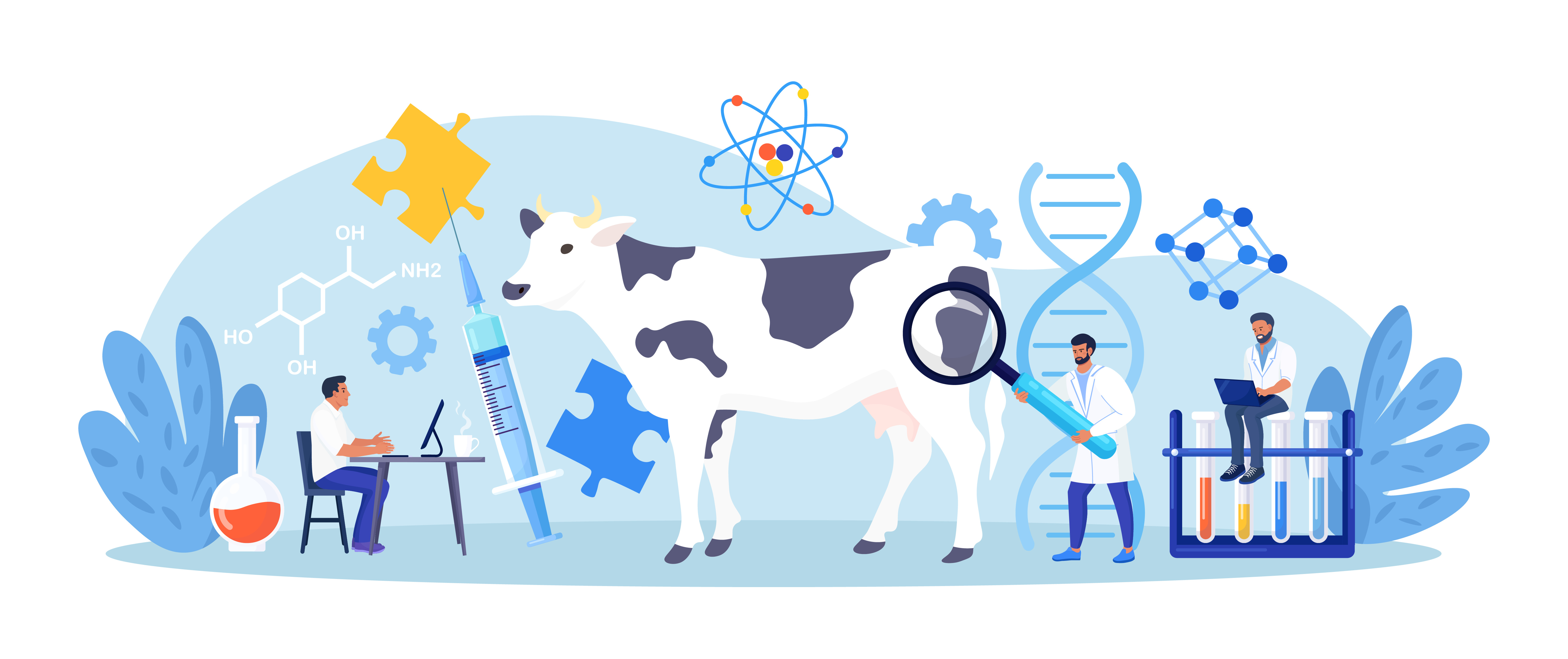NIST/FDA CVM Evaluation of Assays and Control Materials for Characterizing Genome-Edited Animal Biotechnology Products
Summary
Genome editing technology has revolutionized the ability to make targeted changes to an animal’s genome (intentional genomic alterations or IGAs), offering exciting promise for the development of animal biotechnology products that address animal and public health needs (e.g., animals for agriculture/human food use, biopharm animals that become sources for therapeutic products such as organs for xenotransplantation, etc.). Resources including qualified control assays and benchmark data that increase the reliability of the characterization of IGAs in animals are needed to support the development of innovative animal biotechnology products and improve regulators’ confidence in developers’ evaluations.
The U.S. Food and Drug Administration Center for Veterinary Medicine (FDA CVM) has established a collaboration with the NIST Genome Editing Program aimed at generating such resources.
See FDA announcement here.
Description
FDA CVM oversees regulation of IGAs in animals, including those that have been created using genome editing technologies. Characterization of these IGAs is an important part of the regulatory process to ensure that the edit to the animal’s genome is what it is intended to be and to identify any unintended changes. However, there are currently no validated measurements and standards for characterizing unintended genomic alterations in animals.
To address these needs, FDA CVM and the NIST Genome Editing Program are collaborating to develop resources including standardized measurements for characterizing both intended and unintended alterations in cattle and swine biotechnology products that are produced using genome editing. These resources are intended to provide developers of IGAs in animals with example characterization approaches, qualified assays and benchmark data that can be used as part of the development and regulatory process as well as for validating methods, materials and/or data.

PROJECT GOALS
- Qualify commercial cattle and swine cell lines
- Generate independent data on DNA sequence assessment before and after genome editing and protocols/datasets from genome editing procedures
- Evaluate the reliability and reproducibility of existing genome editing off-target analyses for the characterization of unintended edits in cattle and swine cells
- Publish data, protocols, potential reference materials, and/or measurements, which can be used to determine and validate assays intended to characterize IGAs
PROGRESS
- A commercially available swine cell line was characterized for genomic stability and baseline genomic sequence and structure
- CRISPR/Cas9 genome editing reagents were qualified in vitro and evaluated in swine cell line
- Off-target sites identified and analyzed in edited swine cells
- The CHANGE-seq (circularization for high-throughput analysis of nuclease genome-wide effects by sequencing) biochemical off-target assay was evaluated for reproducibility on swine DNA

